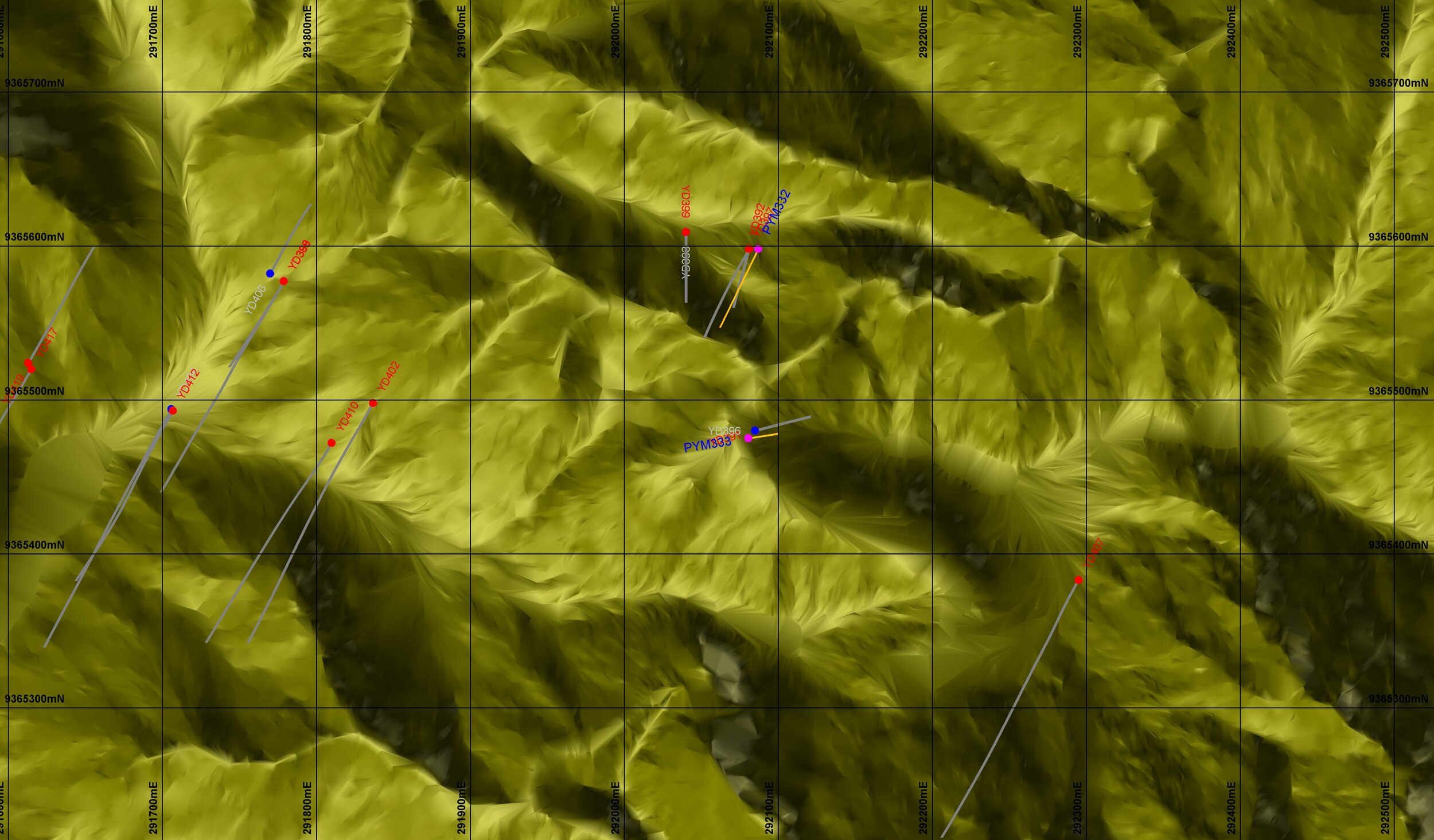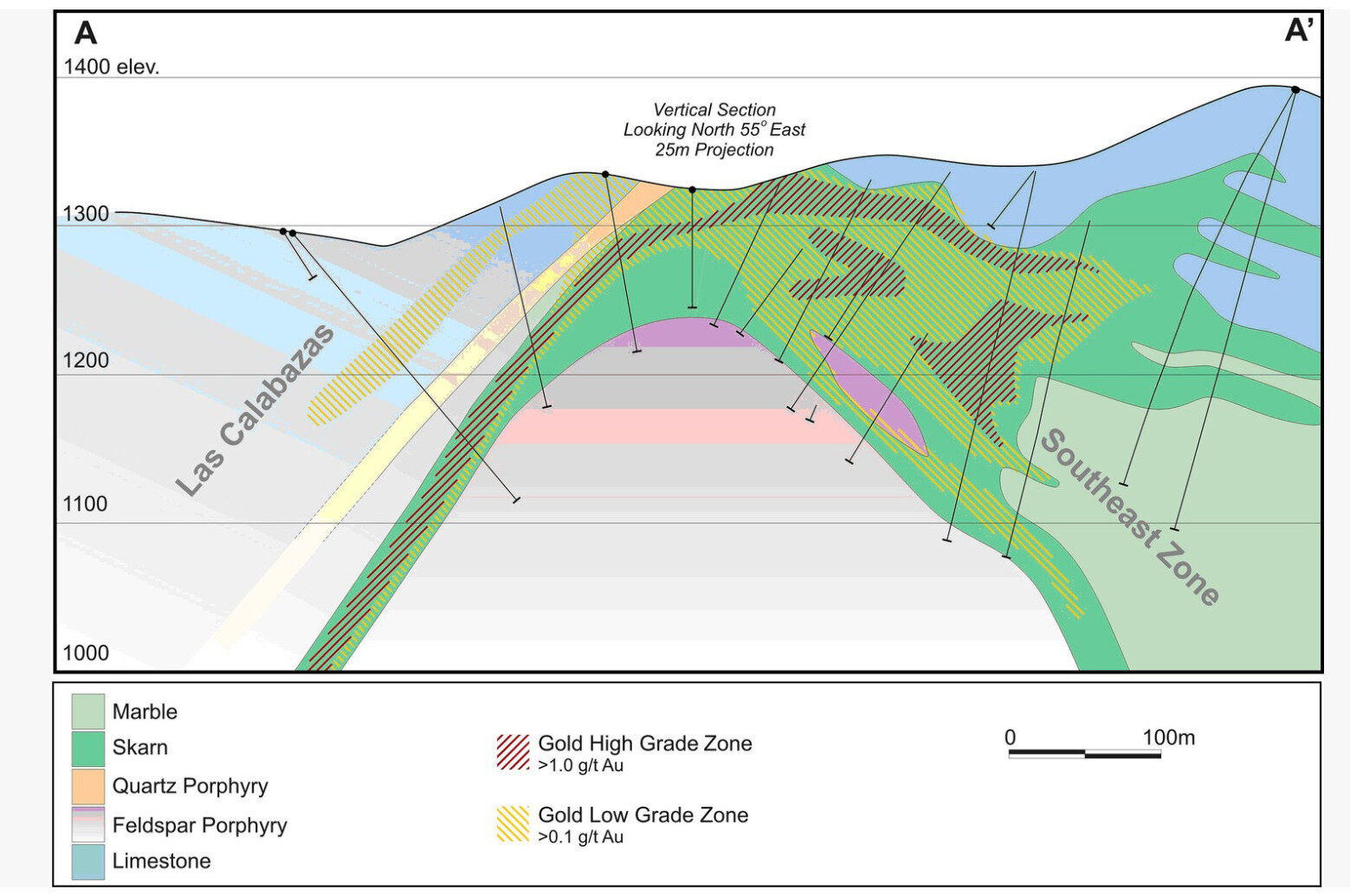Yandera Project
The Yandera Project, in Papua New Guinea, is one of the largest undeveloped copper deposits in the world
Corporate Structure
The Yandera Project area was the subject of intensive, drill-based exploration programs during the late 1960s and 1970s by a number of companies. The historic activity, which included 102 diamond drill holes totaling over 33,000 metres, culminated in the preparation of a mining study by BHP, identifying the Yandera porphyry system as containing one of the largest undeveloped porphyry copper systems (with ancillary molybdenum and gold) in the world.
Subsequent to that, Era Resources Inc. spent over USD $100 million and drilled another 471 holes totaling over 144,000 metres. There remains opportunity for further exploration to increase the resource.
+ HISTORY
- In 1965, Kennecott acquired the EL to work on the property. They continued ownership and operated until 1973, when Triako Mines acquired the property and had its operator, Amdex, complete the work programs.
- Amdex jointly worked with Broken Hill Proprietary Company (BHP) on the property from 1974 to 1977. In 1978 Amdex joint-ventured with Buka Minerals. Work and ownership between Amdex and Buka Minerals continued until 1984, when they dropped the property. The property sat idle until 1999, when Highland Pacific and Cyprus Amax acquired an EL and worked on the property before dropping it prior to 2000.
- The property then sat idle again until Belvedere Limited acquired the EL for the property. In 2005, Belvedere formed a joint-venture with Marengo Mining Limited, who operated the property.
- In 2006, Marengo Mining acquired a 100% in the property through the purchase of Belvedere’s interest.
- Since then Marengo Mining, now Era Resources Inc., has been the sole owner and operator of the property. Era was subsequently acquired by Carpo Resources Inc. and is now owned 100% by Freeport Resources Inc.
+ PROPERTY LOCATION
- 145.12°E Longitude / 5.75°S Latitude
- The property deposit is located approximately 95km southwest of the city of Madang, within the Bismark Mountain Range in PNG.
+ PHYSIOGRAPHY
- The mine area is located in the foothills of the Bismarck Range, which is part of the central cordillera of New Guinea at an elevation of approximately 1,900m above sea level. The site is situated on the northern side of the range, about 13km east-northeast from Mt Wilhelm, with the extensive floodplain of the Ramu River approximately 20km to the east.
- The mine site area is mountainous with the Imbrum River valley to the west and the Tai-Yor River valley to the east.
- Between the mine area and the coast, the pipelines and road traverse two ecoregions and a range of altitudinal zones and vegetation types. Vegetation and habitat in this area includes lower montane forest, mixed hill forest, mixed alluvium forest, kunai grassland and transition/anthropogenic forest types.
+ ACCESSIBILTY & INFRASTRUCTURE
- Freeport Resources currently uses Madang, the capital city of Madang province, as its logistical base of operations. Materials and transport for the site team are via helicopter from Madang Airport or from a lay down yard which runs through the village of Usino, a 10-12 minute flight away.
- There is a maintained road between Madang and Lae, and both cities have active port facilities with tidewater access.
- The site has mobile phone service and diesel powered camp facilities.
- Water is required for this site project and the needs are met with rainfall runoff and potentially groundwater.
- The Project requires both regional and local infrastructure. Facilities are required at Yandera to support mining and processing activities. The balance of processing will take place at the flotation plant located at Cape Rigny. The facilities at both locations include associated support infrastructure and utilities. The Yandera to Cape Rigny link comprises the ore slurry pipeline, access roads and power transmission lines.
+ GEOLOGY & MINERALIZATION
- The property lies within the New Guinea Mobile Belt, which stretches from the southeastern portion of the island through the central mountain ranges into Indonesia, and to the west of Grasberg, Freeport McMoran's giant Copper-Gold mine.
- This belt includes slices of metamorphic basement and contains a variety of sedimentary packages. Above Paleozoic and early Mesozoic schists, marbles and granodiorite lie packages of Triassic to Jurassic volcanic, and clastic sediments, and Jurassic to Cretaceous clastic, volcanic, and volcanogenic sediments.
- Yandera is an igneous, intrusive-hosted, structurally controlled copper porphyry system with ancillary molybdenum and gold composed of a series of adjacent, vertically oriented deposits along recognized structural trends. Mineralization is concentrated in several deposits, namely, Imbruminda, Gremi, Omora, Gamagu and Dimbi. Imbruminda, Gremi, and Omora are contiguous and separated from Dimbi by a low-grade, central, silica-rich zone, which is bounded on three sides by high angle faults. The bulk of the mineralization is adjacent to these major structures on a northwest-southeast trend. Locally, north-northeast-trending cross faults bound mineral domains and reflect the structural complexity of the district.
+ FUTURE PLANS
- The Yandera Project contemplates a large and efficient open pit mine producing 33 million tonnes of ore per annum, and a total of 540 million tonnes over a 20+ year life of mine. The average stripping ratio is expected to be 1.36 and the material will be mined from multiple areas, which will coalesce to form one large pit.
- The resource area has a known 5 kilometre strike length within a 17 kilometre trend with limited tests at depth. This represents tremendous exploration pottential to expand the existing resource.
- A robust development plan includes complete metallurgical test work, updating scoping studies and completing a two phase exploration program aimed at further expansion of the resources.
+ COPPER
Since the 1970’s, mineral extraction has dominated the national economy of Papua New Guinea. Copper and Gold are the two metals of greatest strategic interest to the country.
There will not be enough copper for future electrification and energy needs without a massive acceleration of copper production worldwide. The demand pressure about to be exerted on copper producers all but guarantees a market imbalance. These impending copper shortages will likely induce large mining companies and mid-tier producers to seek out copper juniors with deposits of significant size and economic grades such as Yandera.
Yandera Image Gallery













